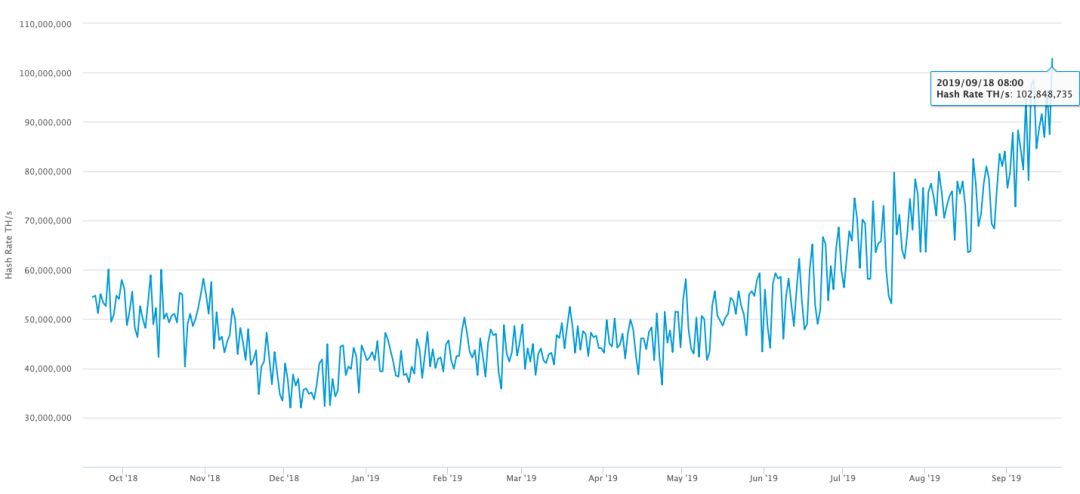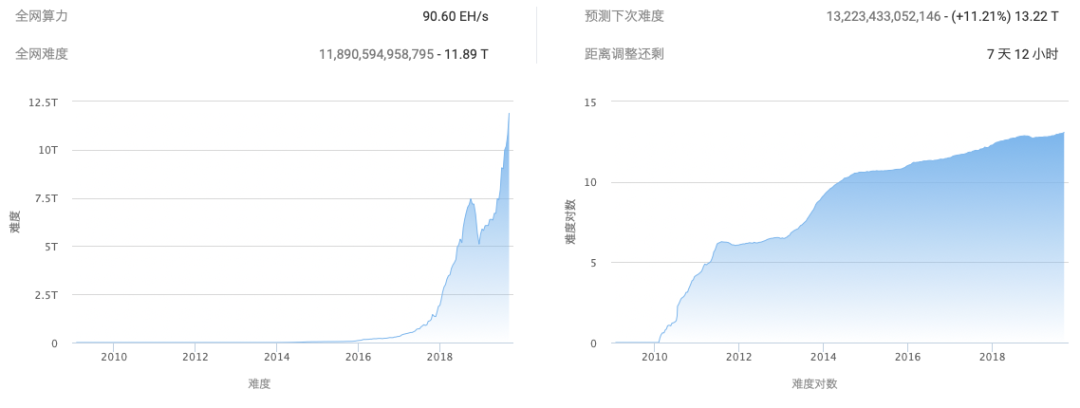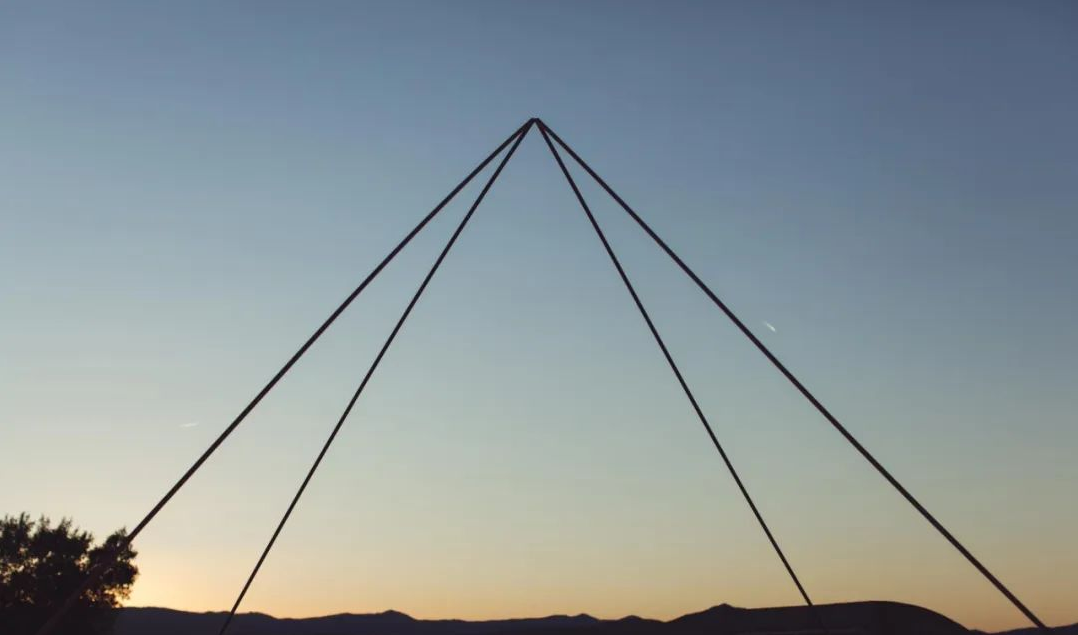Getting started with blockchain | In 2020, bitcoin will be halved or ahead of schedule, the computing power will skyrocket, and the difficulty adjustment mechanism will fail?
Since July of this year, the total network computing power of Bitcoin has increased by more than 80%.
According to Blockchain.com, on September 18th Bitcoin's total network computing power exceeded 102.8EH/S, and on July 1 of this year, this data was 56.4EH/S.
 Bitcoin network computing power, source: Blockchain.com
Bitcoin network computing power, source: Blockchain.com
Due to the continued rapid growth of Bitcoin computing power, many people predict that Bitcoin block rewards will be halved ahead of next year.
Doesn't it mean that "Bitcoin will dynamically adjust the difficulty of mining and ensure that the block rewards are halved every four years?" Why is it ahead?
- Babbitt Watch | Libra Reserve has 2 major doubts, holding a new round of hearing next week
- Zhu Jiaming: Digital currency may completely change the aggregate demand supply framework of money
- These data analysis results are quite interesting about stable coins.
Today, let's take a look.
In the article "What is the meaning of Bitcoin's "half of four years"? In the article, the vernacular blockchain introduces everyone: after every 210,000 blocks of Bitcoin, the block reward is halved.
With Bitcoin averaging one block every 10 minutes and an average of 6 blocks per hour, 210,000 blocks take about 4 years. Therefore, there is a saying that Bitcoin “halfs in four years”.
210000÷(365x24x6)≈4
So, how does Bitcoin guarantee an average block every 10 minutes? Is the mechanism for dynamically adjusting the difficulty of mining difficult, and the Bitcoin may be halved in advance next year?
Actually not, the main reason is that the Difficulty adjustment mechanism of Bitcoin has a lag.
The difficulty dynamic adjustment is not that each block is adjusted once, but one cycle is adjusted once.
How long is a cycle? 2016 blocks.
In other words, Bitcoin adjusts the difficulty factor once per 2016 block. If you still calculate an average of 6 blocks per hour in an average of 10 blocks per hour, Bitcoin is roughly adjusted every 14 days.
 Bitcoin's recent difficulty factor, source: CoinWarz
Bitcoin's recent difficulty factor, source: CoinWarz
So, how does Bitcoin adjust the mining difficulty coefficient?
Mainly by comparing the actual generation time of the previous 2016 blocks. If the actual generation time is less than 20160 minutes (that is, the expected value of one block every 10 minutes), the difficulty will increase proportionally; if it is greater than 20160 minutes, the difficulty will be reduced proportionally.
The formula is based on the following:
New difficulty factor = current difficulty factor * (the actual block time of the previous 2016 block ÷ 20160 minutes)
In order to prevent the bitcoin's difficulty coefficient from changing too fast, there is an interval for each cycle's difficulty adjustment. Assuming the current difficulty is 100%, the next difficulty factor cannot exceed the range of 25% to 400%.
According to the statistics of the btc.com website, the current difficulty of Bitcoin is about 11.89T, and there is still about 7 days from the next difficulty adjustment. The difficulty is expected to increase by 11.21%.
 Source: btc.com
Source: btc.com
Since the difficulty coefficient of Bitcoin is adjusted once in a cycle, and the change in the computing power of the entire network is real-time, this adjustment has a certain hysteresis.
If the network's computing power continues to grow rapidly (for example, now), the time for the block reward to be halved may be advanced; if the network's computing power continues to fall rapidly, the time for the block reward to be halved may be delayed.
This is why many people predict that Bitcoin will be halved in block awards next year.
Are you expecting Bitcoin block rewards to be halved ahead of time? why? Feel free to share your opinion in the message area.
——End——
Author | JackyLHH Produced | Vernacular Blockchain (ID: hellobtc)
『Declaration : This series of content is only for the introduction of blockchain science, and does not constitute any investment advice or advice. If there are any errors or omissions, please leave a message. You are not allowed to reprint this article by any third party without the authorization of the "Baihua Blockchain" sourced from this article. 』
We will continue to update Blocking; if you have any questions or suggestions, please contact us!
Was this article helpful?
93 out of 132 found this helpful
Related articles
- Facebook did not start Libra, but launched a currency war
- Explore: Bitcoin and Nash's ideal currency
- The successful landing of the digital renminbi needs to solve three difficulties
- BTC sees more emotions falling back and returning to the shock pattern
- Market analysis: more patience in the trend, BTC is nearing change
- I heard that as long as this technology matures, the centralized trading platform will disappear.
- State-owned enterprises enter! Blockchain application progress has exceeded 50 during the year





